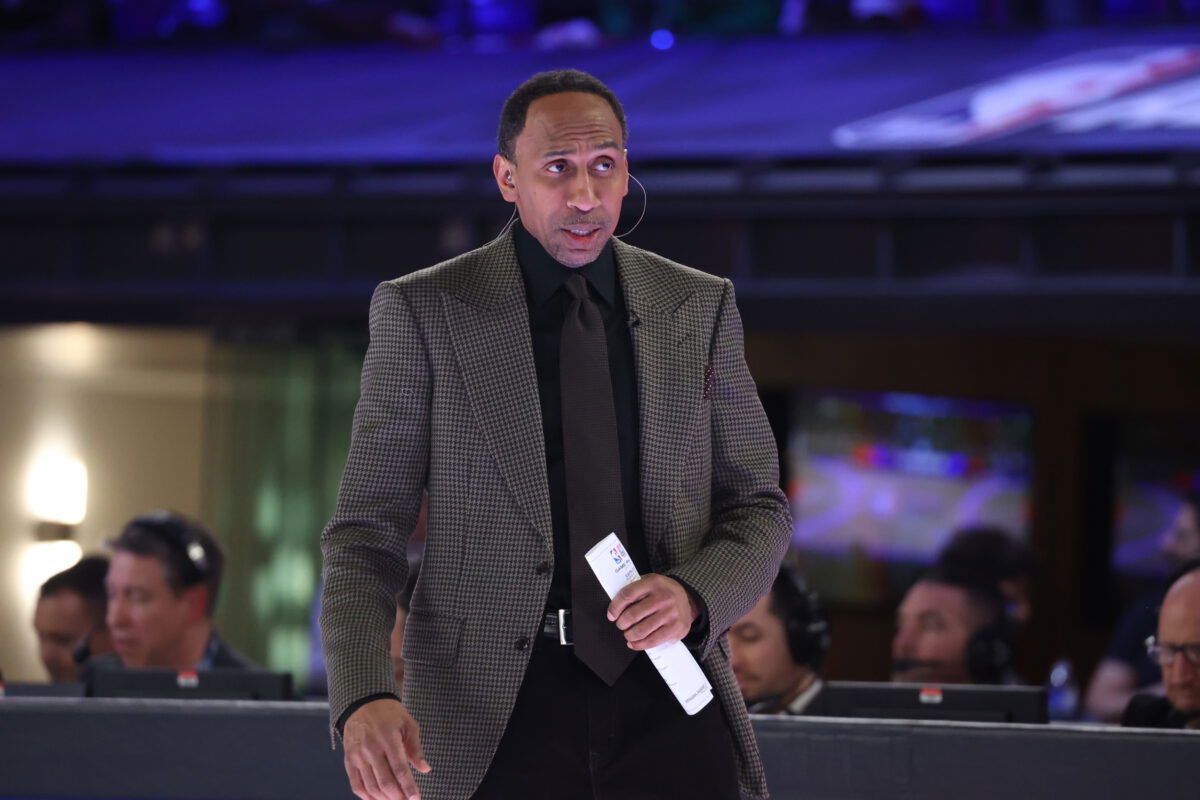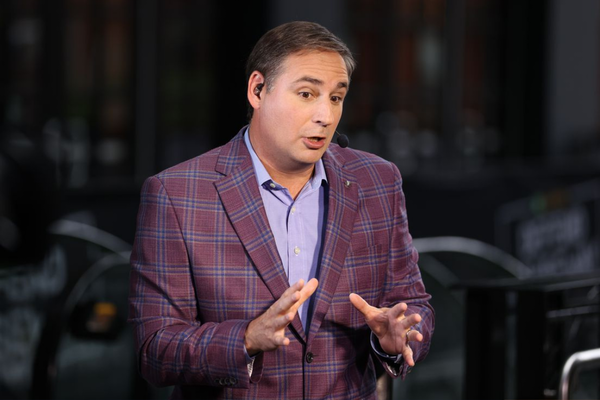
USA Today via Reuters
Feb 16, 2024; Indianapolis, IN, USA; Team Stephen A coach Stephen A. Smith looks on against Team Shannon during the All Star Celebrity Game at Lucas Oil Stadium. Mandatory Credit: Trevor Ruszkowski-USA TODAY Sports

USA Today via Reuters
Feb 16, 2024; Indianapolis, IN, USA; Team Stephen A coach Stephen A. Smith looks on against Team Shannon during the All Star Celebrity Game at Lucas Oil Stadium. Mandatory Credit: Trevor Ruszkowski-USA TODAY Sports
The league just signed the biggest TV deal in its history: a massive $76 billion agreement that will run for 11 years starting in 2025-26. While fans were busy crying over the end of TNT’s NBA era, ESPN’s parent Disney was locking in its slice of the pie alongside NBCUniversal and Amazon, putting games on ABC, ESPN’s upcoming streaming service, Peacock, and Prime Video. But while all eyes were on the media-rights headlines, ESPN was quietly brewing a whole other money-making recipe. And now, a former employee is here to spill exactly what was cooking.
Watch What’s Trending Now!
While chatting with Semafor, former ESPN employee Pablo Torre broke down how the network managed to save a billion dollars, even if it meant missing out on something big. He called it “sort of like observation around the economy of ESPN, which is really an observation around the economy of sports media.” Torre pointed out that ESPN deals in “billions and billions of dollars in TV rights deals” for the most valuable properties in sports and television. So, when you think about NBA voices like Zach Lowe—who is, you know, the greatest at NBA podcasting—plus Bill Simmons, Ryan Russillo, Dan Le Batard, Colin Cowherd, some of the best American media personalities, and himself in the mix, Torre said, “If you were to collect all of those guys and just do the math on that, ESPN legitimately let over a billion dollars walk out the door.”
In Torre’s view, the company “missed, I would argue, the future of sports podcasting that was already in house.” But here’s the twist — they let it go because the economics just didn’t match their bigger picture. “The economics of why they let it go was because it was still fractional compared to their actual interests,” he explained. And when you look at it through ESPN’s lens, “everything that I think about investigative journalism once you see it through the lens of like podcasting you’re like well that was a deliberate and maybe it was uninformed but I would say it’s still a mathematically justifiable choice about what their business really is.”

Just a year ago, Disney’s sports division — led by ESPN — was drowning in red ink, posting a $103 million quarterly loss. Fast forward to early this year, and the picture couldn’t be more different: those same operations raked in $247 million in operating income. So, what changed? Maybe Pablo Torre’s reasoning has a point. Part of the turnaround seems tied to ESPN trimming some of its priciest talent. At the end of last year, the network parted ways with longtime NBA analyst Zach Lowe, a 12-year veteran who built a huge following with his sharp, stats-driven basketball analysis.
Lowe’s departure had nothing to do with his work and everything to do with his paycheck. His contract, according to The Athletic’s Andrew Marchand, paid him at least $1 million a year, making him one of ESPN’s highest-paid on-air analysts. In the middle of a cost-cutting push, that salary became too big to ignore. After leaving, Lowe took his talents to The Ringer and Spotify, launching The Zach Lowe Show in 2025. For ESPN, it was a financial win. But in the bigger picture, it was a loss; they’d let go of someone who could have carried their podcasting and sports journalism game into the future.
But don’t mistake the cost-cutting for stepping back. ESPN still has its hands deep in billion-dollar deals and the future of online streaming.
Inside ESPN’s big money moves
On his podcast, Pablo Torre put it bluntly: “I would say that ESPN over time has always been… balancing the fundamental conflict of we are paying billions of dollars to leagues and also operating the biggest newsroom in sports media… And now over time… the luxury good that is reporting in journalism has become more and more endangered if not almost extinct.” He pointed to moves like ESPN The Magazine shutting down, changes to ESPN.com, and shifting audiences toward influencers. And in his words, the network is now at “this inflection point in this dance”, especially with the NFL now owning a 10% stake in ESPN.
That backdrop makes ESPN’s latest spending spree make more sense. Stephen A. Smith signed a new five-year deal worth at least $100 million, according to The Athletic’s Andrew Marchand. That works out to $20 million a year, an $8 million annual raise from his reported $12 million salary, making him the highest-paid ESPN on-air personality without a licensing tie. Smith will keep hosting First Take but scale back on other appearances, giving him more space to talk politics even as whispers about a potential presidential run swirl. At the same time, ESPN is chasing younger audiences by hiring 22-year-old Katie Feeney, a Penn State grad and sports influencer with over 14 million followers, to lead lifestyle content.
Then there’s the NFL deal. Disney’s ESPN is set to acquire NFL Network, NFL RedZone rights, and NFL Fantasy in exchange for the league taking a 10% equity stake in ESPN, a slice analysts say could be worth $2–$3 billion. The move will supercharge ESPN’s soon-to-launch streaming service and give it more premium content to pair “the world’s leading sports media brand” with “America’s most popular sport.” NFL RedZone will now be distributed through ESPN to cable and satellite providers, maximizing reach, ad dollars, and second-screen engagement. As sports marketing analyst Bob Dorfman put it, “The NFL seems to have no ceiling on growth and value… And it’s only going to grow internationally.”
ADVERTISEMENT
ADVERTISEMENT
ADVERTISEMENT
ADVERTISEMENT

